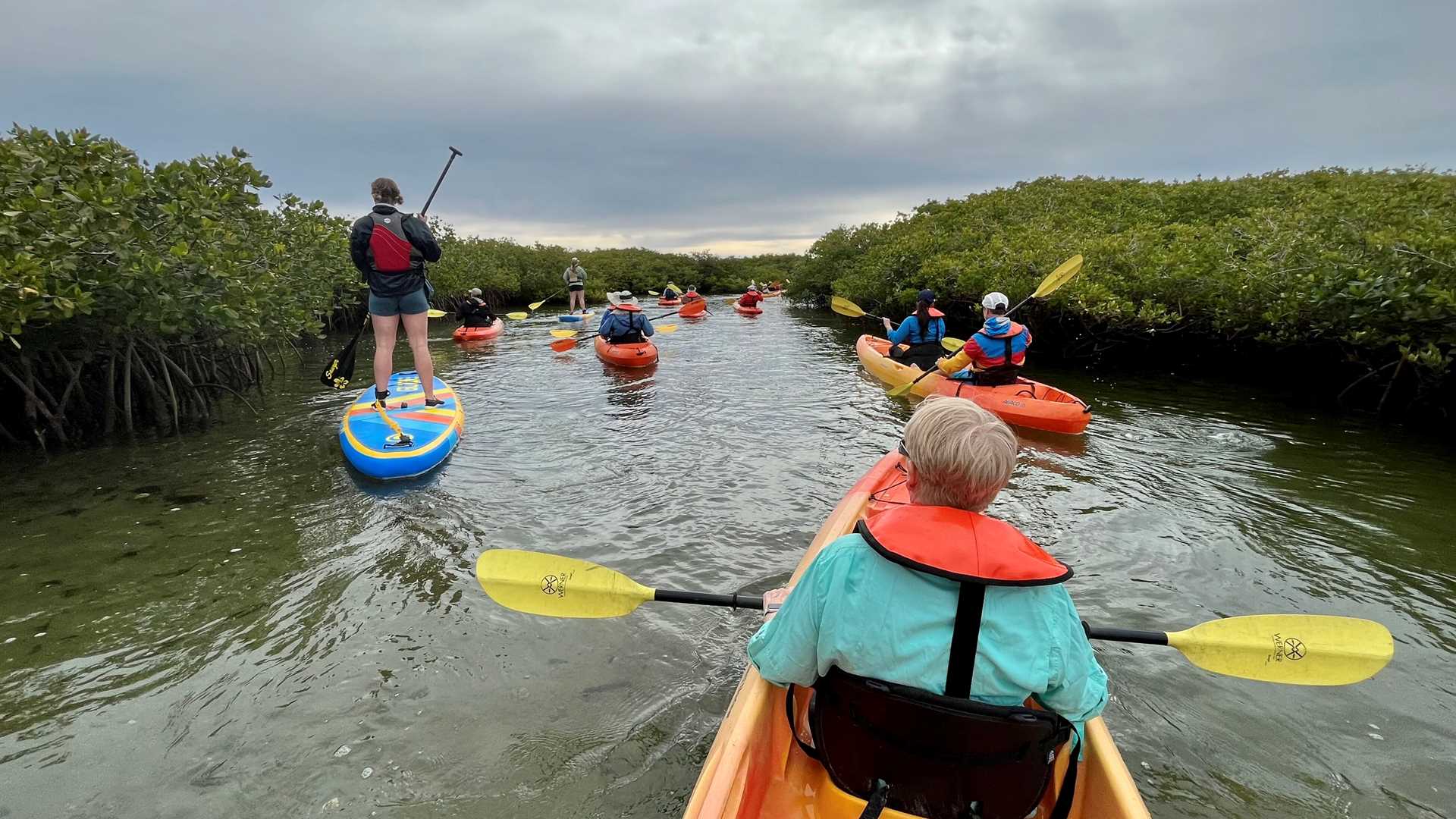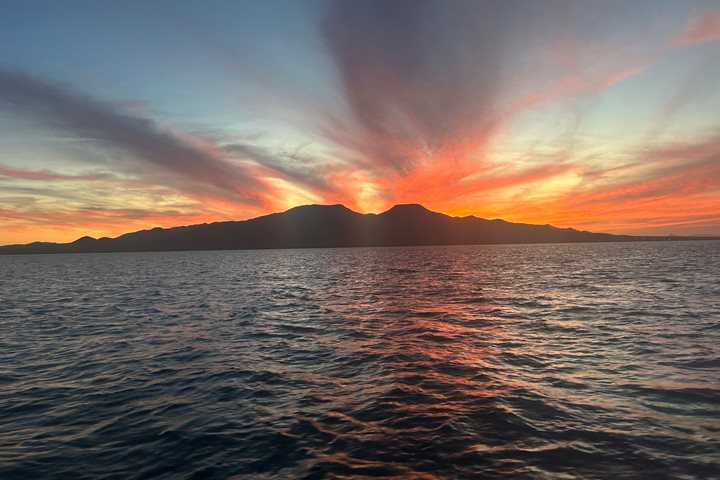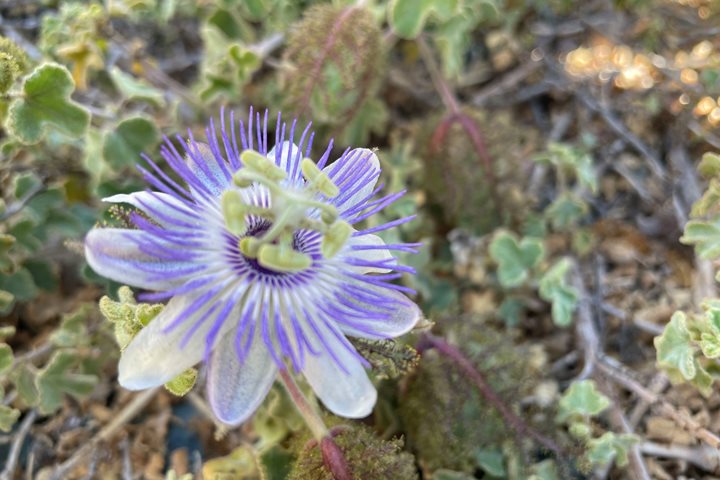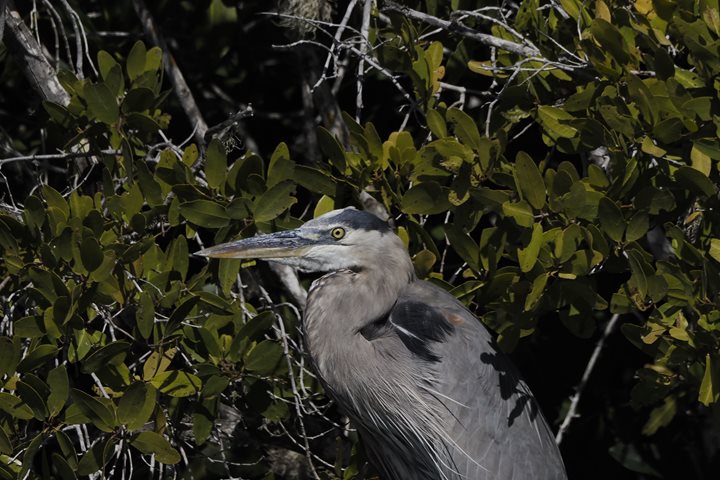After sailing during the night, we woke up to a surreal landscape where mangroves meet sand dunes. This combination of ecosystems is rarely found. As the day started, we got the water toys out. Guests spent a couple hours exploring the inner channels of El Barril, a mangrove forest, by kayak and standup paddleboard. Local pilot Sergio Camacho then got on board to help us navigate through Canal de Soledad, which is famous for being shallow and narrow. During our transit of the canal, we spotted many varieties of shorebirds. While cruising, a pod of bottlenose dolphins joined us and gave us a show as they rode the bow of the ship. When the channel opened, we got to see our first gray whale calf and its mom. The mom breached several times as we passed. After dropping anchor, we headed to Isla Magdalena, a very long and narrow barrier island that separates Bahia Magdalena from the Pacific Ocean. When we came back to the ship, we were greeted by the talented musicians of Los Coyotes from Puerto Adolfo Lopez Mateos. They helped set the rhythm for our Mexican fiesta. The music, the mezcal, and the food were the soul of the fiesta.
- Daily Expedition Reports
- 11 Feb 2023
El Barril and Canal de Soledad , 2/11/2023, National Geographic Sea Bird
- Aboard the National Geographic Sea Bird
- Baja California
Hiro Kawashima, Expedition Leader
Born and raised in Ensenada, Baja California, México, Hiro´s heritage can be traced around the world, from Japanese immigrants to adventurous Finnish sailors, French entrepreneurs, and Spanish roots going back to the first settlers of the Peninsula. ...
Read MoreShare Report
Baja California: Observing the Whales of Magdalena Bay
VIEW ITINERARYRelated Reports
3/15/2025
Read
National Geographic Sea Bird
Puerto Magdalena
Walks in the desert can hold a plethora of surprises, and today was no exception. From clusters of scarlet Palo Adan flowers, the gems of the morning, to purple and white striped passion flowers. The numerous fruits on the vine attested to a series of flowers earlier this month. A diminutive bird, the verdin, was also interested in the Palo Adan flowers. The verdin’s short beak cannot reach the nectar, so this bird approaches the base of the flower, nips it open, and takes a nectar reward; pollination of the flower is thwarted in this thievery. The exoskeleton of a tarantula was found under the scrub, an indication of a spider that has molted and grown a bit bigger. At the end of the trail, we were all rewarded with a magnificent view of the Pacific Ocean. Good things come to those who venture outdoors.
3/14/2025
Read
National Geographic Sea Bird
Boca de la Soledad
Today we woke up in the northernmost part of Magdalena Bay. In the morning, we went whale watching at Boca de la Soledad, where we came across a mother and calf. Later, we went to Estero Chivo at high tide, where we observed a variety of birds. We were particularly interested in the numerous shorebirds, egrets, and herons. We raised anchor to continue our day. While transiting Hull Canal, we spotted bow-riding bottlenose dolphins. National Geographic Sea Bird set anchor in front of Magdalena Island. The wind was blowing, causing the dunes to come alive. After walking among dunes and desert plants, we arrived at the Pacific coast of Magdalena Island. We enjoyed walking along the beach and observing various shells, snails, and sand dollars. In the distance, we spotted the carcass of a beached gray whale and contemplated both life and death. These animals begin their lives on the coast of Mexico, and their cycle also ends here.









